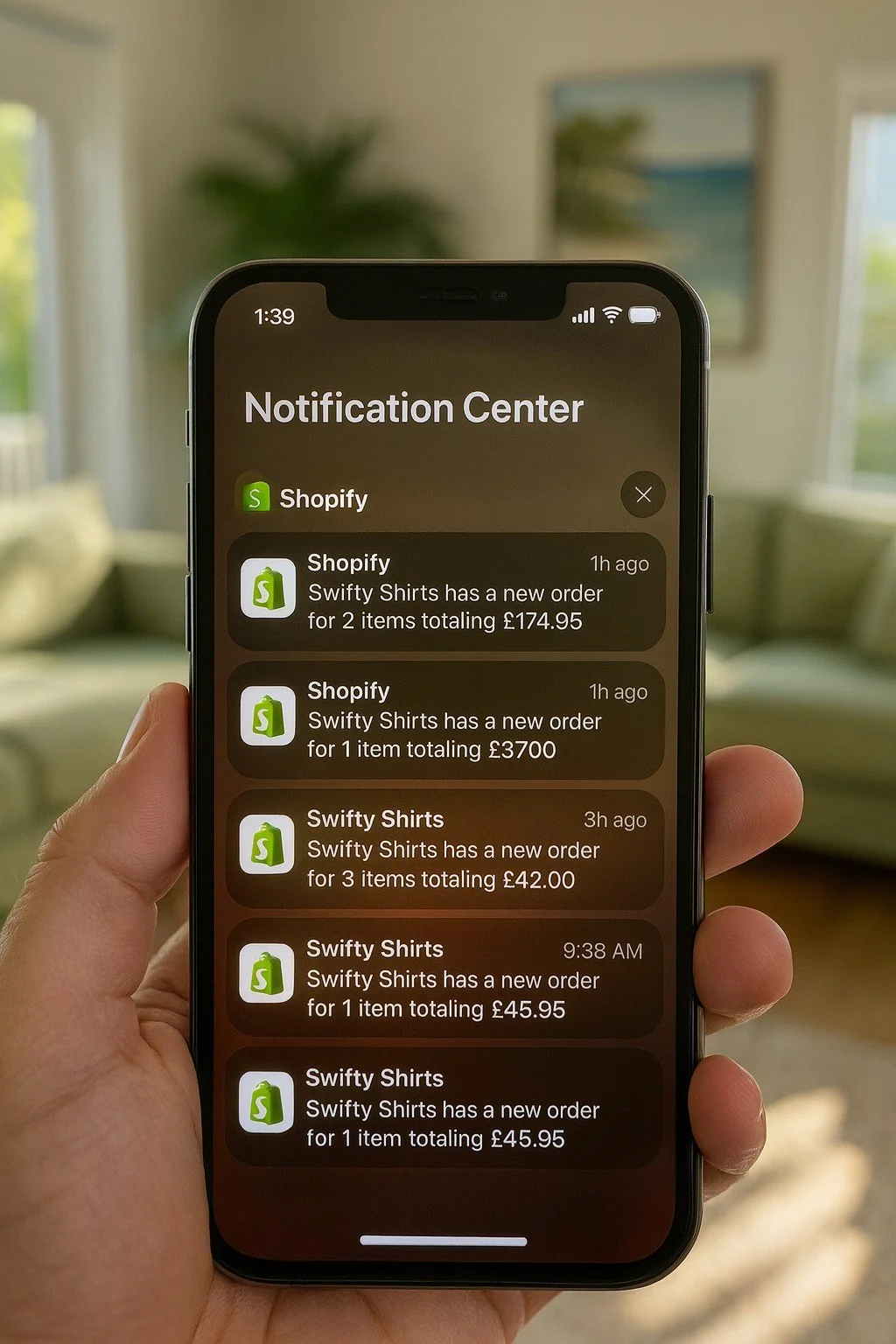How to Start Drop Shipping in 2025: A Realistic Guide for Beginners
Dropshipping platforms like Shopify show how you can sell without holding inventory, with suppliers handling fulfilment directly to your customer.
What Is Drop Shipping?
Drop shipping is a retail model where you sell products without holding stock. Instead, when a customer places an order, the product is shipped directly from the supplier to the customer.
You handle sales and marketing. The supplier handles inventory and fulfilment.
Step 1: Choose a Niche That Solves a Problem
Before anything else, decide what you're going to sell — and who you’re selling to.
Choose a niche with consistent demand, not a passing trend.
Focus on problems, not just products. Solve something.
Research your competitors. Google their products, check reviews, use tools like Google Trends.
Examples:
Desk accessories for remote workers
Sustainable home goods
Pet travel gear
DIY home spa kits
A selection of niche products, such as remote‑working desk accessories or spa kits, helps highlight the importance of focusing on solutions rather than just trends.
Step 2: Find a Reliable Supplier
Without a good supplier, drop shipping fails fast. Look for:
Quality control
Reasonable shipping times
Simple return policies
Responsive communication
Where to Find Suppliers:
AliExpress or CJ Dropshipping (international)
Local suppliers (UK-based, for faster delivery)
Consider suppliers that integrate with platforms like Shopify or WooCommerce.
Beginners often use supplier marketplaces like AliExpress, Spocket, and DSers to connect stores directly with products, especially when integrated with platforms like Shopify or WooCommerce.
Step 3: Build Your Online Store
You don’t need to code — just choose a platform:
| Platform | Best For |
|---|---|
| Shopify | Beginners, full automation, fast setup |
| WooCommerce | WordPress users who want flexibility and control |
| Wix | Simple sites with built-in design tools and easy editing |
Essentials for Your Store:
Strong brand identity (name, logo, colours)
Professional product photos
Unique product descriptions (don’t copy supplier text)
Trust badges and clear returns policy
Step 4: Register Your Business (Yes, Really)
In the UK, you should register your drop shipping business even as a sole trader.
Register with HMRC or Companies House.
Open a business bank account.
Set up basic accounting (e.g., QuickBooks, Xero).
Think about VAT thresholds and tax obligations.
Step 5: Market Your Store
Now that your site is live, you need traffic. Customers don’t just appear.
Traffic Sources:
SEO: Blog articles, keyword-optimised product descriptions, FAQs.
Paid ads: Meta, TikTok, Google Shopping.
Social media: Short-form video (product demos), customer testimonials.
Email marketing: Abandoned cart emails, welcome series, promos.
Start with a small budget and test creatives and copy.
Small business owners are increasingly turning to TikTok, filming product demonstrations from home studios to drive sales and build customer trust.
Step 6: Fulfil Orders Smoothly
When a customer orders from your site:
You forward the order to the supplier (or automate it)
The supplier ships it to the customer
You update the tracking and confirm dispatch
Don’t forget to:
Answer customer emails quickly
Be transparent about shipping delays
Offer replacements or refunds when needed
Bonus Tip: Optimise Your Shipping Strategy
This is where World Options comes in.
As your store scales, shipping costs and delivery speed become deal-breakers. With World Options, you can:
Compare rates from DHL, FedEx, UPS, and more
Access international delivery with better control
Print labels and manage tracking in one place
Get dedicated business support
Starting a drop shipping business in 2025 isn’t a get-rich-quick scheme. But with the right products, a trustworthy supplier, and a strong shipping partner, it can be a real business, with real growth potential.





